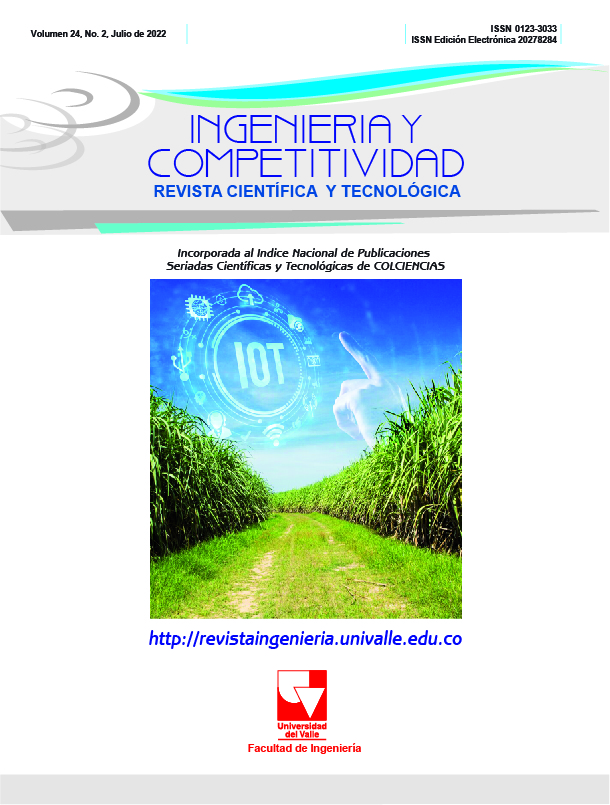Modelo matemático para la interacción competitiva entre células cancerosas vs sistema inmune con terapia de cáncer
Palabras clave:
Cancer, Sistema dinamico, Sistema inmune, Terapia fotodinamicaContenido principal del artículo
Se presenta un modelo matemático que consiste en un sistema de dos ecuaciones diferenciales ordinarias (EDO), que describen la interacción competición entre cáncer, sistema inmune y una terapia que para el presente artículo se asume como terapia fotodinámica que usa un nanocompuesto a base de TiO2 modificado [Basante et. al. (2016),(2017)]. Se analizan las consecuencias del tratamiento en base al análisis de estabilidad del sistema dinámico, encontrando que es posible encontrar existen condiciones adecuadas para la eliminación del cáncer.
Basante-Romo, Mónica J., Oscar Gutierrez, and Rubén J. Camargo-Amado. "Evaluacion de la Citotoxicidad Inducida por TIO2 modificado Funcionalizado con Folato y Oro sobre Lineas Celulares de HeLa y CHO." Información tecnológica 27.5 (2016): 63-68. DOI: https://doi.org/10.4067/S0718-07642016000500008
Basante M. J. Mecanismo de acción de terapia fotodinámica para cáncer con TiO2 modificado en células Hela y sus efectos en modelo animal. Tesis doctoral. Universidad del Valle; 2017.
Boyce, W. E., DiPrima, R. C., & Meade, D. B. Elementary differential equations. John Wiley & Sons; 2017.
Chrobak, J. M., & Herrero, H. Un modelo matemático de competición entre cáncer y sistema inmune. In XXI Congreso de Ecuaciones Diferenciales y Aplicaciones y XI Congreso de Matemática Aplicada CEDYA; 2009.
de Pillis, Lisette G., Ami E. Radunskaya, and Charles L. Wiseman. "A validated mathematical model of cell-mediated immune response to tumor growth." Cancer research 65.17 (2005): 7950-7958. DOI: https://doi.org/10.1158/0008-5472.CAN-05-0564
Díaz, J. I., Tello, J. I. On the mathematical controllability in a simple growth tumors model by the internal localized action of inhibitors Nonlinear Analysis: Real World Applications. 2003;4:109-125. DOI: https://doi.org/10.1016/S1468-1218(02)00017-2
Gałach, M. Dynamics of the Tumor---Immune System Competition---the Effect of Time Delay. International Journal of Applied Mathematics and Computer Science. 2003;13:395-406.
Hart, D., E. Shochat, and Z. Agur. "The growth law of primary breast cancer as inferred from mammography screening trials data." British journal of cancer 78.3 (1998): 382-387. DOI: https://doi.org/10.1038/bjc.1998.503
Hirsch, M. W., Smale, S., & Devaney, R. L. Differential equations, dynamical systems, and an introduction to chaos. Academic press; 2012. DOI: https://doi.org/10.1016/B978-0-12-382010-5.00015-4
Jones, D. S., Plank, M., & Sleeman, B. D. Differential equations and mathematical biology. 2009; CRC press. DOI: https://doi.org/10.1201/9781420083583
Kirschner, D., & Panetta, J. C. (1998). Modeling immunotherapy of the tumor–immune interaction. Journal of mathematical biology, 37(3), 235-252. DOI: https://doi.org/10.1007/s002850050127
Kuznetsov, Vladimir A., et al. "Nonlinear dynamics of immunogenic tumors: parameter estimation and global bifurcation analysis." Bulletin of mathematical biology 56.2 (1994): 295-321. DOI: https://doi.org/10.1016/S0092-8240(05)80260-5
Downloads

Esta obra está bajo una licencia internacional Creative Commons Atribución-NoComercial-CompartirIgual 4.0.
Los autores que publican en esta revista están de acuerdo con los siguientes términos:
Los autores ceden los derechos patrimoniales a la revista y a la Universidad del Valle sobre los manuscritos aceptados, pero podrán hacer los reusos que consideren pertinentes por motivos profesionales, educativos, académicos o científicos, de acuerdo con los términos de la licencia que otorga la revista a todos sus artículos.
Los artículos serán publicados bajo la licencia Creative Commons 4.0 BY-NC-SA (de atribución, no comercial, sin obras derivadas).


 https://orcid.org/0000-0003-0640-0104
https://orcid.org/0000-0003-0640-0104 https://orcid.org/0000-0001-5440-3970
https://orcid.org/0000-0001-5440-3970 https://orcid.org/0000-0002-5973-9200
https://orcid.org/0000-0002-5973-9200